Summary | Excerpt | Reading Guide | Reviews | Beyond the Book | Read-Alikes | Genres & Themes | Author Bio
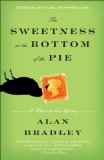
This article relates to The Sweetness at the Bottom of the Pie
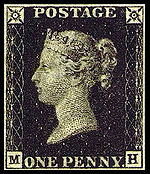 Great Britain's "Penny Black" plays a significant role in The Sweetness at the Bottom of the Pie. It was the first stamp, first issued on May 6, 1840. It cost one penny, was printed in black, and bore the profile of Queen Victoria. For the next 60 years (until her death in 1901), Queen Victoria's portrait was the only subject allowed on British stamps.
Great Britain's "Penny Black" plays a significant role in The Sweetness at the Bottom of the Pie. It was the first stamp, first issued on May 6, 1840. It cost one penny, was printed in black, and bore the profile of Queen Victoria. For the next 60 years (until her death in 1901), Queen Victoria's portrait was the only subject allowed on British stamps.
In the early days of the postal service stamps and envelopes did not exist. A letter was folded, sealed shut and, although it was possible to prepay, it was usually the person who received the letter who paid for the delivery costs. To avoid payment, many people refused to accept letters; others developed codes, placing secret marks on the outside of the letter that conveyed their message without the need to open it. In addition the rate for each letter had to be calculated depending on the distance it traveled. In short, the system was a mess and inadequate for a nation in the middle of an industrial revolution with an empire to run.
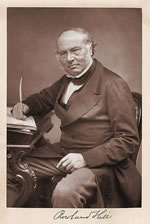 As a solution, in 1837, British teacher and social reformer Rowland Hill began to campaign for prepaid, low cost and uniform postal rates affordable by all. The result was the introduction of the Penny Black, worth about 40c by today's rates. Soon other countries began using this system and in 1847 the United States Postal Service printed its first stamps, a 5-cent stamp picturing Benjamin Franklin and a 10-cent stamp picturing George Washington.
As a solution, in 1837, British teacher and social reformer Rowland Hill began to campaign for prepaid, low cost and uniform postal rates affordable by all. The result was the introduction of the Penny Black, worth about 40c by today's rates. Soon other countries began using this system and in 1847 the United States Postal Service printed its first stamps, a 5-cent stamp picturing Benjamin Franklin and a 10-cent stamp picturing George Washington.
With the birth of stamps came the birth of stamp collectors, called "philatelists" - derived from the Greek words, philo, (love) and ataleia (free of charges) in the sense that the postage stamps replaced a cash postal charge.
Definitive vs Commemorative Issues
The first stamps were definitive issues, initially picturing people, mainly royalty and dead presidents. This term is used today for any regular stamp produced in large quantities and sold for a long period of time.
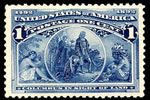 The first commemorative stamp in the United States was issued in 1893, on the occasion of the World Columbian Exposition (the Chicago World's Fair), to commemorate the 400th anniversary of Columbus's arrival in the New World. Today, any stamp that commemorates a special event, person, or thing is considered a commemorative stamp. These are produced in smaller quantities than definitives, and sold for a shorter period of time, and are thus more valuable to the collector. Commemoratives are different from seasonal or holiday stamps (such as Christmas or Love stamps) that are produced in far greater quantities.
The first commemorative stamp in the United States was issued in 1893, on the occasion of the World Columbian Exposition (the Chicago World's Fair), to commemorate the 400th anniversary of Columbus's arrival in the New World. Today, any stamp that commemorates a special event, person, or thing is considered a commemorative stamp. These are produced in smaller quantities than definitives, and sold for a shorter period of time, and are thus more valuable to the collector. Commemoratives are different from seasonal or holiday stamps (such as Christmas or Love stamps) that are produced in far greater quantities.
Stamps are also more specifically classified by their format, their purpose and their condition. (See links below for more information)
Philatelic Facts
Filed under Cultural Curiosities
![]() This "beyond the book article" relates to The Sweetness at the Bottom of the Pie. It originally ran in May 2009 and has been updated for the
January 2010 paperback edition.
Go to magazine.
This "beyond the book article" relates to The Sweetness at the Bottom of the Pie. It originally ran in May 2009 and has been updated for the
January 2010 paperback edition.
Go to magazine.





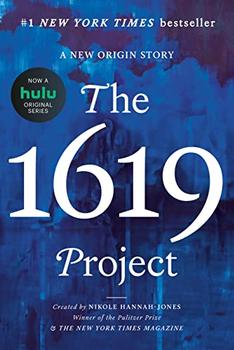
Your guide toexceptional books
BookBrowse seeks out and recommends the best in contemporary fiction and nonfiction—books that not only engage and entertain but also deepen our understanding of ourselves and the world around us.